Decorating Wedding Cake With Fresh Flowers
There's something about working with fresh flowers in the cake decorating process that gets me so excited! The thrill always starts at the flower shop, because I really get to nerd out on different combinations of blooms. With a color palette in mind, I love to play around with different textures and varieties of flowers. But deciding on a good floral palette involves more than just what will look best – the flowers have to actually be safe for cakes.
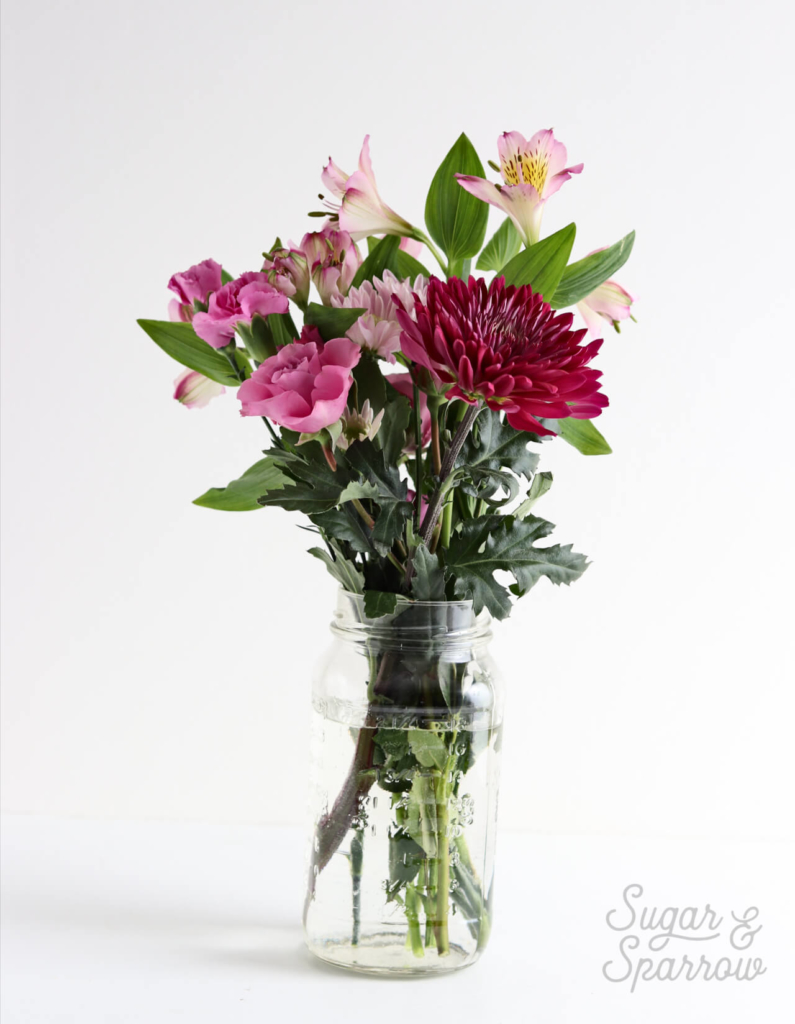
In addition to making sure the blooms you're purchasing for your cake are organic and haven't been sprayed with pesticides, it's important to know ahead of time which flowers to avoid. I've found that in some cases, the florist won't even know! So before I teach you how to incorporate fresh florals into your cake designs, make them last, and keep them from leaking their stem juices into your precious cake, I wanted to share a list of flowers that are safe for your cakes (and in some cases, even completely edible!) and which ones to avoid completely:
Flowers That Are Safe : Pansies, Lavender, Violas, Violets, Roses, Marigold, Cornflower, Carnations, Chrysanthemums, Day Lily, Hibiscus, Peony, Chamomile, Freesia, Gerber Daisy, Lisianthus, Queen Anne's Lace, Primrose, Sunflowers. Here's a longer list (and what parts of each flower are actually edible!).
Flowers To Avoid: Lily Of The Valley, Daffodil, Poinsettia, Azaleas, Calla Lily, Hyacinth, Oleander, Wisteria, Rhododendron, Hydrangea, Mistletoe, Holly, Sweet Pea. Here's the long list .
Now that you know which flowers work best for keeping your cake tasty and non-toxic, here's my method for decorating cakes with fresh florals:
You Will Need:
- Fresh florals (organic, pesticide-free, and from the safe list)
- Floral scissors or pruning tool
- A frosted cake
- Floral tape
- Scissors
Step 1: Wash And Trim The Flowers
Under a sink with cold water running, gently wash your flowers to make sure there aren't any bugs or dirt lingering in the petals. Locate where you'd like to trim the stem (I usually keep it 2-3 inches long) and place it under the water. Snip the stem at an angle and keep the trimmed portion under the water for another few seconds. I consider that the flower's final drink.
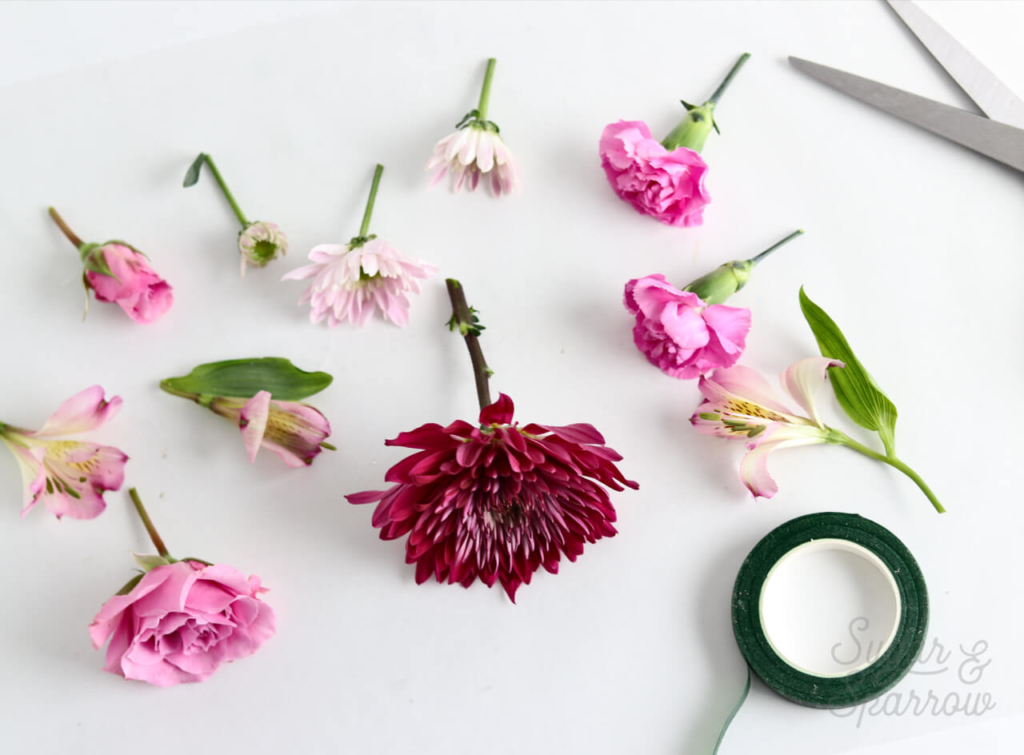
Pat the flowers and stems dry with a paper towel carefully.
Step 2: Wrap The Stems
Cut a piece of floral tape that's about 2-3 inches long. Wrap the tape around the stem, focusing on covering the majority of the stem and where it's been pruned. The goal here is to create a barrier between the cake and the stem, especially the bottom of the stem, and prevent it from leaking flower secretion (ok yes that's gross sounding but also a good band name!) into the cake layer.
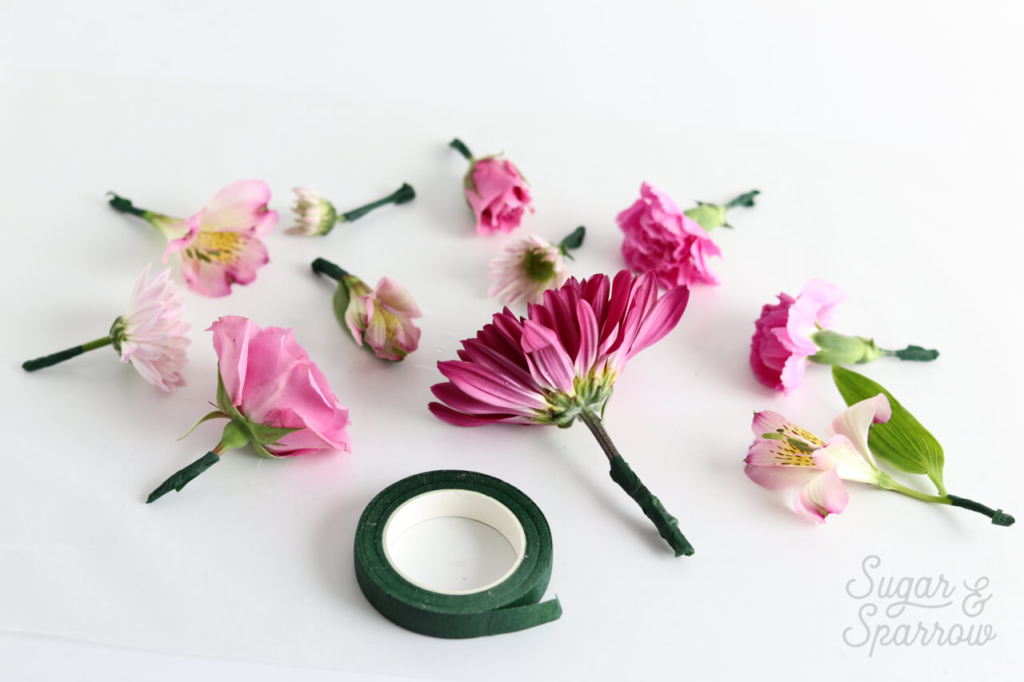
Wrapping the stem in this way also keeps the flowers fresh for longer, because it helps hold the moisture and nourishment within the stem.
Step 3: Decorate The Cake
Now that you've created a good barrier between the cake and your floral stems, plus you've set your mind at ease by choosing flowers from the safe list, it's time to arrange them on your cake – my favorite part! I usually take some time to loosely plan where to place the flowers (off the cake) before committing to an arrangement. Once you're happy with a plan, stick the covered stems into the cake one by one. Simple as that!
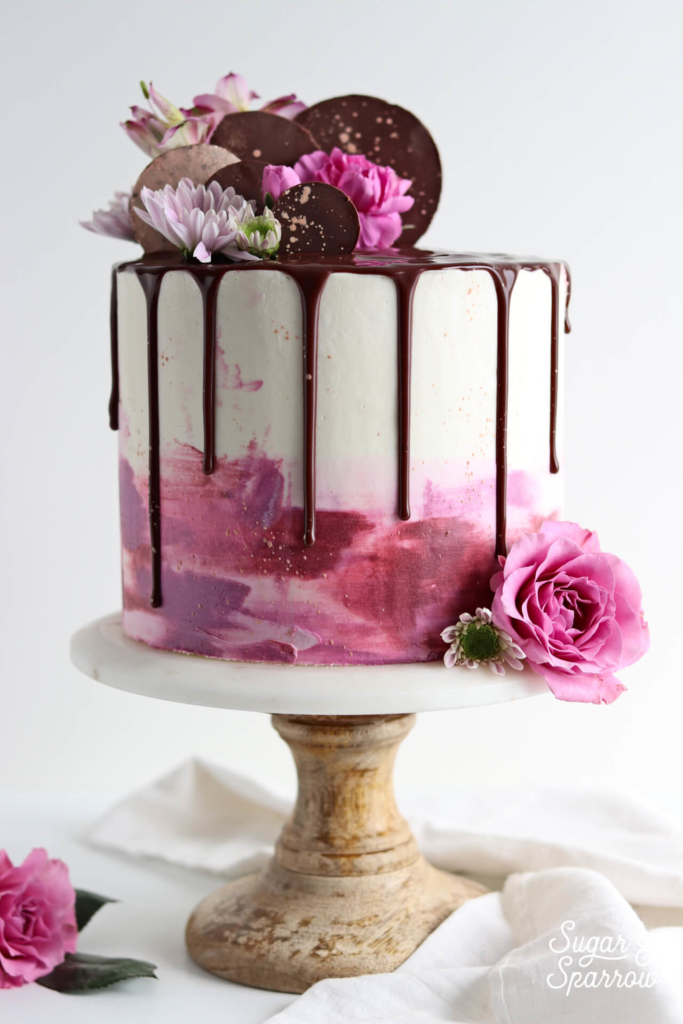
For larger flower bouquets, a great trick for keeping those stems from contaminating your cake is to create a small (1-2 inch) fondant ball and stick your stems into that before placing the whole thing on top of your cake. I've definitely used that trick for fuller floral arrangements and it works like a charm. You'll still need to wrap your stems with floral tape before sticking them into the fondant holder to keep the moisture contained.
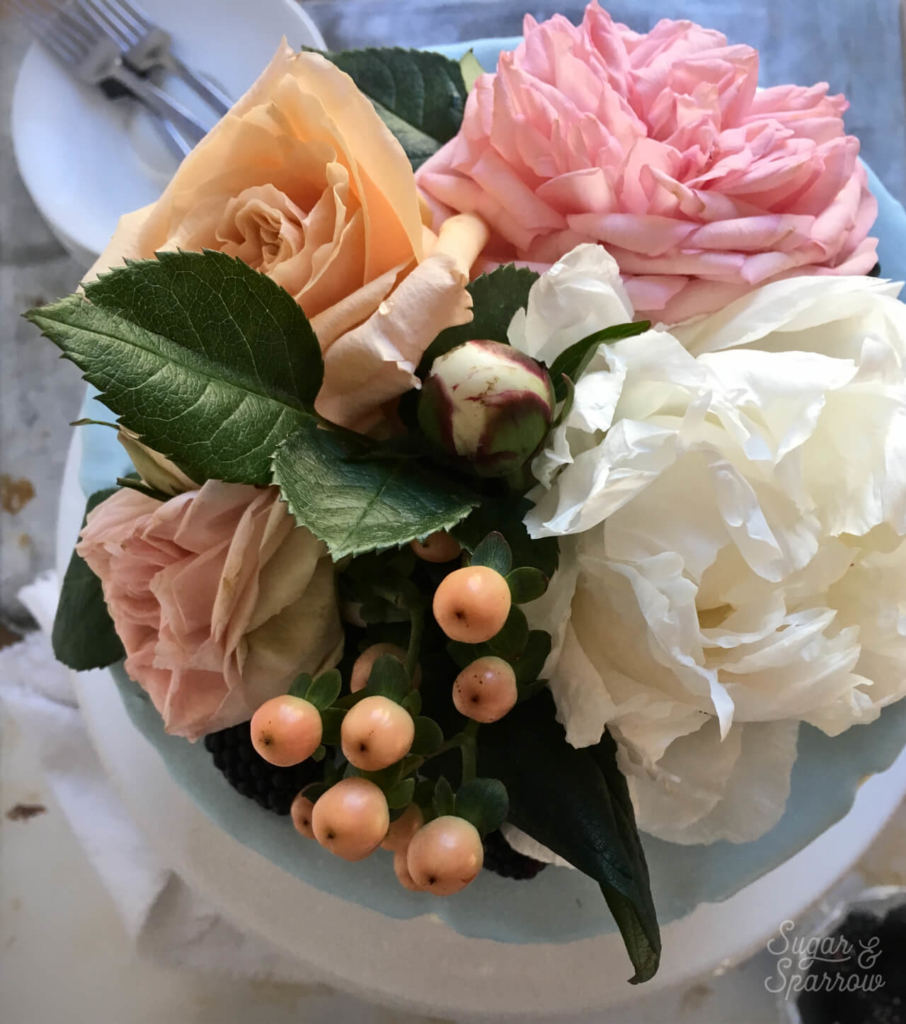
And if you're really wanting to keep those flowers fresh, you can always try using one of those plastic tubes you get from the florist. You can fill them with a little water and stick your flowers into it like a vase before submerging it into the cake. I've never tried that method, but I hear it works great.
Storage And Timing
Keep in mind that each flower will have a specific lifespan once you wrap the stem, so the best way to be sure how long it will remain fresh is to ask your florist beforehand. In my experience, I've had really good luck storing cakes with fresh florals in the refrigerator. Typically, fresh flowers will last around eight hours in the refrigerator and remain fresh for a few hours outside of the fridge environment. Even though I've had good luck with the fridge, I always like to prepare and place the flowers at the very last second possible (sometimes even on-site at the event) to ensure the freshest blooms. Because after all that prep work and stressing over a cake, the last thing you want to happen is wilting.
Have you tried any of these methods before? Know any tips that aren't on my list? I'd love to know your secrets for working with fresh florals too! Let me know in the comments.
Decorating Wedding Cake With Fresh Flowers
Source: https://sugarandsparrow.com/fresh-flowers-cake-decorating/
Posted by: grahamuncin1992.blogspot.com

0 Response to "Decorating Wedding Cake With Fresh Flowers"
Post a Comment